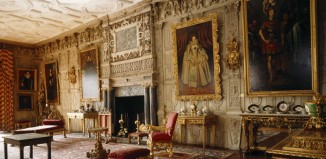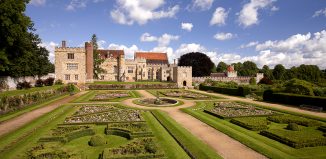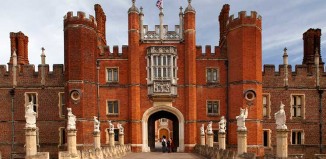Hampton Court Palace
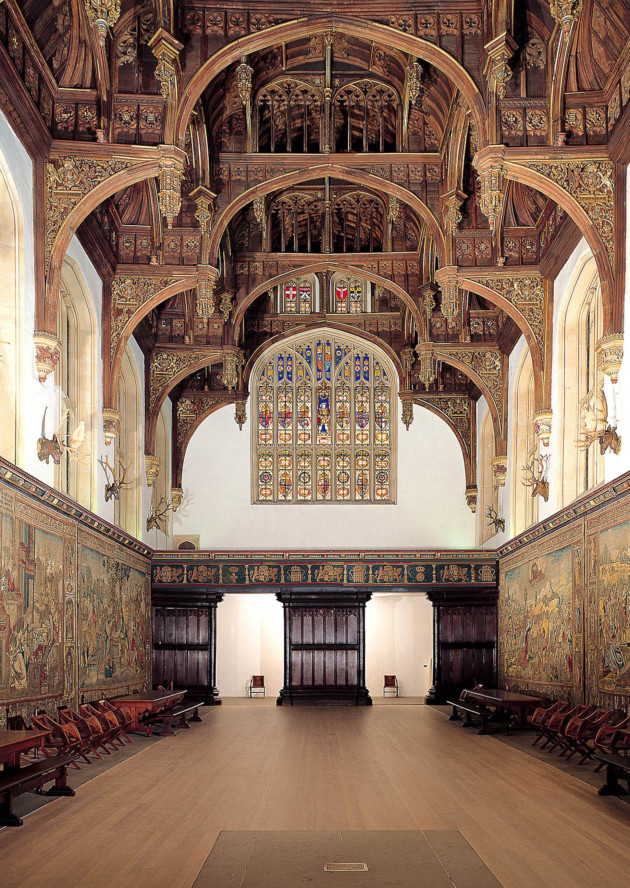
With gardens and grounds sprawled leisurely along the Thames, Hampton Court Palace is impressive, its architecture a refined blend of 500 years of history. Impossibly tall Tudor chimneys reach skyward amid a flourish of towers and turrets, a red brick ‘village’ established for one purpose: to house a king.
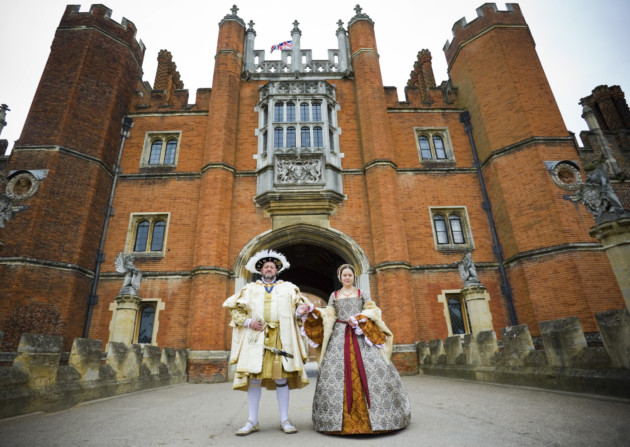
Henry VIII may be the most famous resident, as well as the first royal owner, but many of the sumptuous apartments that he would have enjoyed were demolished by over-zealous Stuarts and Georgians. But for a lack of funds (and the grief that followed the death of King William III’s wife Mary in 1694), Sir Christopher Wren would have wiped an entire period of Tudor history on the whim of the spendthrift king, who spent £9.5 million on ‘improvements’ in today’s terms.
Ironically, these later periods do not resonate with the masses as much as the Tudor era. The elegant Georgian Rooms, used by George II and Queen Caroline in the early 18th century are distinctly quieter than Henry’s remaining State Apartments, where throngs queue to gaze up at the ornate ceilings of both the Chapel Royal, where he married Jane Seymour, and the hammer beamed Great Hall. Even the lowly engine rooms of the property, the Tudor Kitchens, have a buzz about them today, with costumed actors busying themselves with culinary tasks, allegedly for a court feast.
In the 13th century Hampton Court was a modest grange owned by a religious order. By the early 16th century members of the royal court had taken an interest in the site, taking out a 99-year lease on the property. Thomas Wolsey, chief minister to the new King Henry VIII took ownership in 1514 and made vast alterations including adding lodgings for the king’s visits. After 14 years at the property, Wolsey was forced out having fallen terminally out of favour with the portly monarch, his political life over. Hampton Court was vastly altered by the king throughout his 38-year reign and said to be Henry’s fourth favourite residence out of a choice of more than 60.
By 1540 the palace was among the most sophisticated in England, adorned with the very best craftsmanship and ‘mod-cons’ of the period, with multiple garderobes (toilets) and fresh drinking water pumped in through a state-of-the-art lead pipe system. There were numerous recreational facilities from tennis courts to bowling alleys, as well as a vast hunting park for Henry’s favourite hobby. “People are surprised that so little of Henry’s palace remains,” says Lesley Terrell, Sales Executive. “It helps that we focus so much on recreating his life through a stream of events and our resident character Henry VIII and members of his court routinely bring history to life for a captivated public.”
For over 100 years following the king’s death the palace remained virtually as it was, little altered by Elizabeth I or the Early Stuarts. This changed during the English Civil War when Cromwell ordered that the property’s royal possessions be sold off. In 1660 with the monarchy restored, the palace came back into focus – Charles II making the first alterations. William III continued the trend, with no expense spared on his lavishly decorated King’s Apartments; the breathtaking rooms represent a flagrant disregard for both Tudor heritage and the royal purse. As a result we can today admire the genius of Antonio Verrio’s staircase fresco and wood carver Grinling Gibbons whose intricate designs reflect nature. George II was the last monarch to use the palace as a family residence, delighting in the magnificence of the property. He and his wife Caroline commissioned William Kent to design the Cumberland Suite; it was the final flourish of Hampton Court as a royal residence.
Today, the palace houses part of the Royal Collection, the world’s largest private collection of art, some of which dates to Tudor times. The earliest works within it are the tapestry collection, including the two Triumphs of the Gods on display in the King’s Presence Chamber, which once formed part of Henry VIII’s 2,000-strong tapestry store. To experience the palace inside and out, a guided or audio tour is recommended. Choose among those aimed at families, or focused on specific apartments, collections, conservation, the gardens or follow in the footsteps of a costumed character for an entertaining twist. Perhaps the most unusual tour (though not for the faint hearted) is of the rooftops where you can see the Tudor chimney stacks up close, and in the distance many other iconic landmarks of the city.
Tel: 0844 482 7777. www.hrp.org.uk

